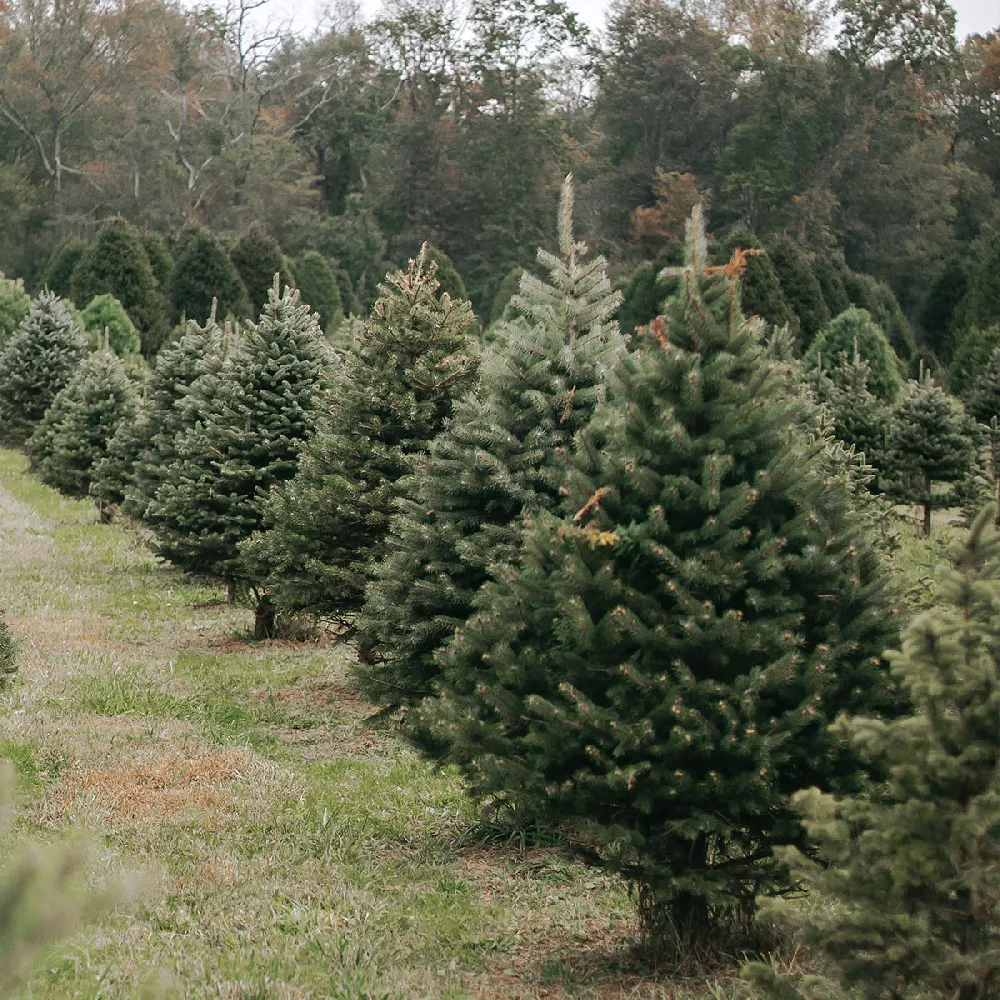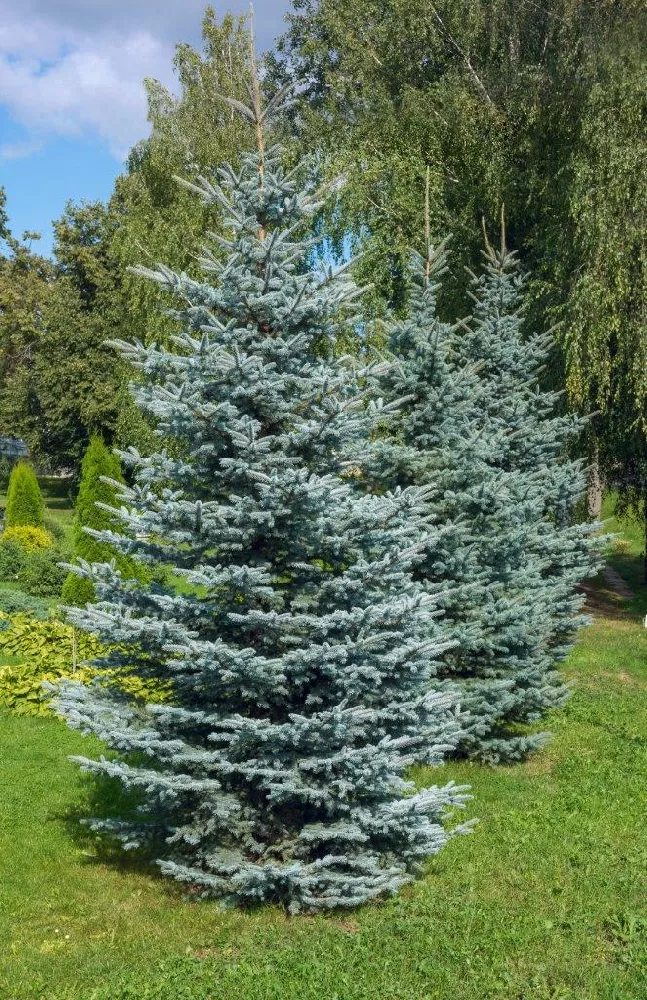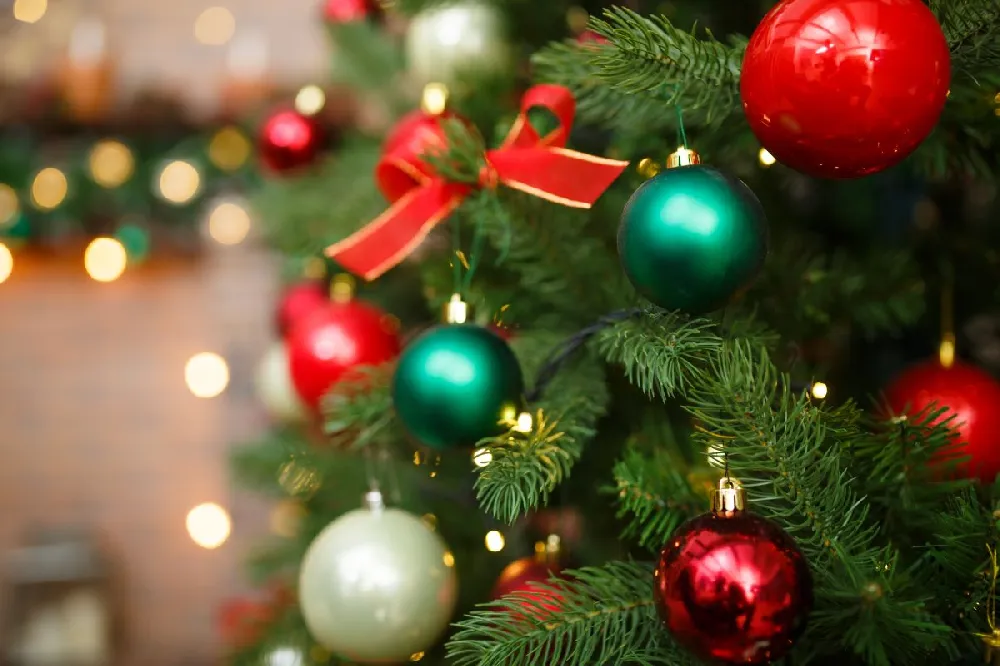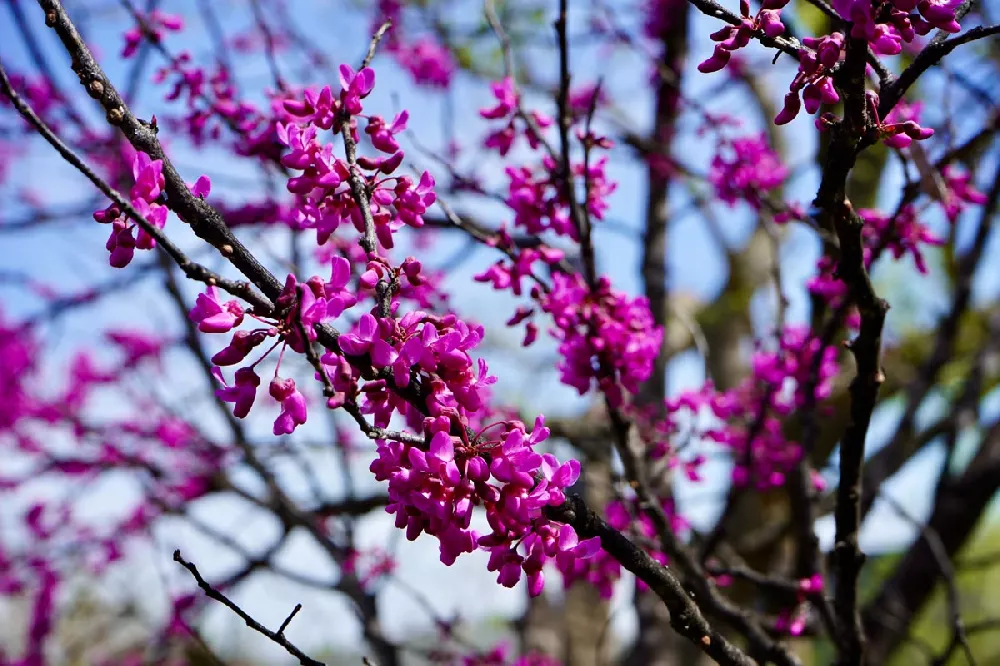- Home >
- Evergreen Trees >
- Douglas Fir Tree
Douglas Fir Tree for Sale
- Ships in 1-2 days
- 1-Year Warranty Eligible
- Pots or accessories are not included unless specified in the product options.
Shipping Details:
Once your order is shipped, you’ll receive an email with a tracking number and estimated delivery date. Most orders ship immediately, but some items are seasonal and may only ship in spring or fall. These products are noted on the website.
The Douglas fir (Pseudotsuga menziesii) is a coniferous tree native to coastal areas in western North America. The species is closely related to spruce, fir, pine, and other coniferous trees, but is a separate genus. Douglas fir is a top choice of wood in construction due to its strength and relatively quick growth.
- The species is evergreen, providing year-round foliage in most climates.
- Douglas fir is commonly grown and sold as a Christmas tree.
- Douglas fir is the state tree in Oregon and is featured on many of the state's license plates.
Plant Care
Sunlight

Prefers an area with partial shade or full shade.
Watering
Water once per week or less during the growing season based on how dry the soil is.
Fertilizing

Overall, fertilizer needs are low. Fertilize once a season with a balanced formula.
Planting instructions
When planting a Douglas fir tree, choose a location with well-drained soil that receives at least four hours of sun daily. Avoid planting the tree in the summer months, as the transplant will have trouble establishing itself in the heat. When you have chosen a location, start by digging a hole to the root ball’s depth and twice as wide. Gently place the young tree in the hole, keeping it upright and level with the ground. Backfill with soil and tamp down lightly. Give the planting site a thorough watering and add soil if settling occurs.
Watering and nutrients
As young Douglas fir trees become accustomed to their new planting sites, you will want to water them at least once per week. Once established, space out your watering schedule, making sure the trees receive around 20 inches of water per year. If you live in a climate with high levels of rainfall, you rarely have to water the tree. For faster growth and healthier trees, apply a thin layer of compost or all-purpose fertilizer in early spring.
Pruning
Prune the Douglas fir tree in late winter or early spring, when the tree is not actively growing. You may prune for shape and size, as well as any dead or decaying sections of the tree. Be sure to sterilize shears between cuts to prevent infections. Always dispose of diseased plant matter away from other trees to stop further spread. Do not prune branches that are larger than two inches in diameter, as this may slow growth.
Pests and diseases
The Douglas fir is relatively resistant to pests and diseases when grown in proper conditions. In some areas and climates, your trees may become susceptible to Douglas fir beetle infestations. The insect is highly destructive and is primarily attracted to downed fir trees and branches. Properly disposing of any pruned branches or dead trees on your property can prevent the pest. When planted in waterlogged soil, root rot and other fungal diseases are likely to occur. Always plant the trees in well-draining soil and add soil amendments like perlite or vermiculite when planting.
FAQs
How big do Douglas Fir trees grow?
Douglas fir trees can grow to nearly 200 feet tall in their natural environment. Trees used in landscaping usually grow 40 to 80 feet tall. Depending on the space it is given, the species will grow to widths of 12 to 20 feet. The diameter of trunks in old-growth forests can range from three to six feet. Some of these ancient trees lived over 1,000 years. Your backyard-grown tree will probably not live as long.
Is Douglas fir a hardwood or softwood?
Douglas fir is a coniferous evergreen tree, so technically a softwood. However, Douglas fir is a tough, reliable wood commonly used for building materials. In addition to general construction, the wood is used in airplanes, boats, and other high-stress applications. It is much more resilient than common softwoods like pine and spruce. While not as strong as many hardwoods, Douglas fir grows much quicker, as it does not go through a dormant period each year.
How long will untreated Douglas fir last in construction?
Douglas fir is an excellent option for outdoor construction projects. The species grows faster than hardwood, and the lumber is less expensive. The wood features a natural resistance to insects and decay, making it a go-to choice for those who work with untreated lumber. When used in direct contact with the ground, such as in raised garden beds, you can expect a three to five-year lifespan. Raised structures that use untreated Douglas fir may last for 10 or more years.
Is Douglas fir a true ‘fir’ tree?
Abies is the ‘fir’ genus, home to about 50 species of evergreen trees. The Douglas fir is not a true ‘fir’, as it is part of the Pseudotsuga genus. At various points in history, the species has been called the Douglas spruce, the Oregon pine, and the Douglas-fir. This confusion is due to its close similarity to these other coniferous tree species. P. menziesii shares its common name with the ‘Douglas-fir’ genus, symbolizing the species’ importance.
Compare Similar Products
Customer Reviews
 Cant Wait to Decorate
Cant Wait to DecorateGrow baby grow Very healthy Looks quite happy
 Douglas Fir
Douglas FirGreat, reminds me of one my Grandmother had at the front of her house









